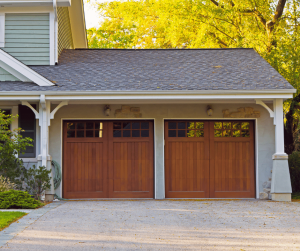
A Guide to Choosing and Using Spray for Garage Door Springs
At HomeSmiles, we understand the importance of regular home maintenance to prevent costly repairs. One crucial aspect of home maintenance that often gets overlooked is the lubrication of garage door springs. These springs play a vital role in the smooth operation of your garage door, and proper lubrication can extend their lifespan and improve functionality. In this guide, we’ll walk you through everything you need to know about choosing and using the right spray for garage door springs.
What are Garage Door Springs?
Garage door springs are essential components that help in the lifting and lowering of your garage door. There are two main types of springs:
- Torsion Springs: Located above the garage door, these springs use torque to lift the door.
- Extension Springs: Found on either side of the door, these springs extend and contract to open and close the door.
Why Lubricate Garage Door Springs?
Lubricating garage door springs offers several benefits:
- Reduces Noise: Proper lubrication minimizes the creaking and squeaking noises of the springs.
- Prevents Rust: Lubricants protect the springs from moisture, reducing the risk of rust and corrosion.
- Extends Lifespan: Regular lubrication reduces friction and wear, prolonging the life of the springs.
- Ensures Smooth Operation: Well-lubricated springs ensure that your garage door operates smoothly and efficiently.
Choosing the Right Spray for Garage Door Springs
Selecting the right spray is crucial for effective maintenance. Here’s what to look for:
- Types of Lubricants:
- Silicone-based sprays
- Lithium grease sprays
- Teflon-based sprays
- Features to Look For:
- Anti-rust properties
- Long-lasting lubrication
- Ease of application
- Non-sticky formula
How to Properly Lubricate Garage Door Springs
Proper application is key to effective lubrication. Follow these steps:
Preparation
- Gather necessary tools: spray, rag, ladder, etc.
- Ensure the garage door is closed and disconnected from the opener.
Application
- Clean the springs to remove dirt and debris.
- Apply the spray evenly along the length of the springs.
- Wipe off any excess spray to prevent drips.
Safety Tips
- Wear safety goggles and gloves.
- Avoid over-lubricating as it can attract more dirt.
- Maintain a regular lubrication schedule (every 3-6 months).
Common Mistakes to Avoid
- Using the wrong type of lubricant.
- Overlooking other moving parts of the garage door.
- Not cleaning the springs before applying the spray.
Water Heater Maintenance FAQs
Can I Flush My Water Heater Myself?
Yes, you can flush your water heater yourself. However, if you’re not comfortable doing so, HomeSmiles can handle this task for you. Flushing your water heater involves turning off the power and water supply, attaching a hose to the drain valve, and allowing the water to flow out until it runs clear.
Is It Worth Flushing Water Heater?
Absolutely. Flushing your water heater removes sediment build-up, which can improve the efficiency and lifespan of the unit. Regular maintenance can prevent potential issues and save on energy costs.
How Do You Flush Sediment Out of a Water Heater?
To flush sediment out of a water heater, follow these steps:
- Turn off the water heater and water supply.
- Connect a garden hose to the drain valve at the bottom of the tank.
- Place the other end of the hose in a suitable drainage area.
- Open the drain valve and allow the water to flow out.
- Once the tank is empty, briefly turn the water supply back on to flush out remaining sediment.
- Close the drain valve, remove the hose, and turn the water heater back on.
How Do I Know If My Water Heater Needs to Be Flushed?
Signs that your water heater needs to be flushed include:
- Reduced hot water supply
- Unusual noises such as rumbling or banging
- Discolored water
- Increased energy bills
What Happens If a Water Heater Is Not Flushed?
If a water heater is not flushed, sediment can build up at the bottom of the tank, leading to:
- Reduced efficiency
- Higher energy bills
- Shorter lifespan of the water heater
- Potential damage to the tank
How Do I Know If My Water Heater Has Sediment Build-Up?
Indications of sediment build-up include:
- Noises from the tank when heating
- Reduced hot water flow
- Cloudy or discolored hot water
- Longer heating times
How HomeSmiles Can Help
At HomeSmiles, we take care of all those “honey-do” items on your list, including the maintenance of your garage door springs and water heaters. Our 18-point Interior Home Maintenance and Exterior Home Maintenance service ensures that your home remains in top condition, preventing costly repairs down the line. With our professional team, you can trust that your garage door springs, water heaters, and other critical home components are properly maintained. Our services include:
- Gutter Cleaning
- Pressure Washing
- Window Washing
- Dryer Vent Cleaning
- Preventative Home Maintenance
Regular lubrication of garage door springs is essential for the smooth and efficient operation of your garage door. By choosing the right spray and applying it correctly, you can extend the life of your springs and avoid unnecessary repairs. Additionally, regular maintenance of your water heater, including flushing out sediment, is crucial for its efficiency and longevity. Let HomeSmiles take care of these and other maintenance tasks for you, so you can enjoy peace of mind and a well-maintained home.
- Protecting Your Property: Why the Right Cleaning Method Makes All the Difference
- The #1 Thing That’s Dulling Your Curb Appeal (And How to Fix It)
- How Maintenance Bundles Provide Peace of Mind for Busy Small Business Owners and Facility Managers
- Essential vs. Complete Home Packages: Choosing the Right Preventive Care for Your Property
- How a Simplified Service Model Benefits Both Homeowners and Franchisees Alike


